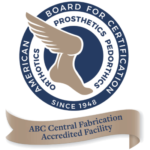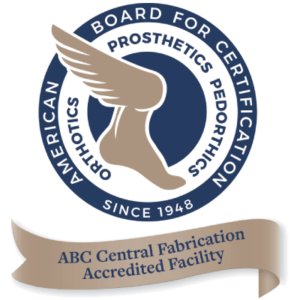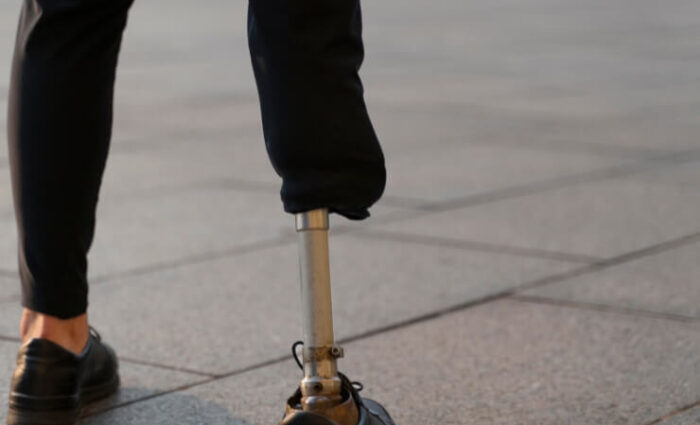Working with Patients that Require Prosthetics.
The collaboration between doctors and prosthetists is crucial for ensuring that individuals with limb loss receive comprehensive care and achieve optimal outcomes. This is particularly true when it comes to the fitting and utilization of above-knee leg prostheses. In this article, we explore the key aspects of how doctors can work effectively with prosthetists to enhance patient experiences and outcomes, especially for leg prostheses above the knee.
Early Communication and Collaboration
The foundation of successful patient outcomes with above-knee leg prostheses lies in early communication and collaboration between doctors and prosthetists. Establishing a collaborative relationship from the start allows for seamless information exchange, ensuring that the patient’s medical history, surgical details, and rehabilitation goals are shared effectively.
Comprehensive Patient Assessment
Doctors play a vital role in providing prosthetists with a thorough understanding of the patient’s health status, mobility goals, and any specific challenges related to their amputation. Sharing detailed information about the residual limb condition, joint stability, and any existing medical conditions is essential for creating a tailored prosthetic solution.
Post-Surgery Prosthetic Planning
Engage prosthetists early in the post-surgery phase to discuss prosthetic planning. Collaboration at this stage allows for better alignment between the surgical approach and the prosthetic fitting process. Proactive planning can help address potential complications and streamline the transition to prosthetic use.
Clear Communication of Surgical Details
Provide prosthetists with clear and detailed information about the surgical procedure. Include the surgical technique used, any changes to the bone structure, and the condition of soft tissues. This information is critical for prosthetists to design and fit an above-knee leg prosthesis that accommodates the unique aspects of the patient’s amputation.
Customization Based on Individual Needs
Every patient is unique, and their prosthetic needs may vary. Doctors can collaborate with prosthetists to ensure that the above-knee leg prosthesis is customized based on individual patient requirements. Factors such as activity level, lifestyle, and functional goals should be considered during the prosthetic design and fitting process.
Rehabilitation Planning and Support
Coordinate rehabilitation efforts between doctors and prosthetists to optimize patient outcomes. Proactive planning for post-amputation rehabilitation can include discussions on gait training, strength building, and the gradual introduction of the leg prosthesis. Collaboration ensures a holistic approach to patient care.
Regular Follow-Up and Assessment
Establish a system for regular follow-up and assessment of patients utilizing above-knee leg prostheses. Prosthetists and doctors can work together to monitor the patient’s progress. Address any challenges, and make necessary adjustments to the prosthetic device to enhance comfort and functionality.
Patient Education and Support
Doctors and prosthetists can collaborate to provide comprehensive patient education on the care and maintenance of above-knee leg prostheses. Informing patients about proper hygiene, skincare, and routine checks empowers them to actively participate in their prosthetic care.
Problem-Solving Together
In cases where patients experience issues with their leg prostheses, collaboration between doctors and prosthetists is key to effective problem-solving. Regular communication ensures that any concerns are addressed promptly, leading to improved patient satisfaction and overall outcomes.
Staying Informed About Technological Advances
Stay informed about technological advances in prosthetics. Doctors and prosthetists can collaborate to explore innovative solutions and incorporate the latest advancements in above-knee leg prostheses to enhance patient comfort and mobility.
The collaboration between doctors and prosthetists is essential for achieving optimal outcomes for individuals requiring above-knee leg prostheses. By fostering clear communication, engaging in comprehensive patient assessment, coordinating post-surgery planning, customizing prosthetic solutions, supporting rehabilitation efforts, conducting regular follow-up assessments, providing patient education, problem-solving together, and staying informed about technological advances, doctors and prosthetists can work in tandem to enhance the lives of amputees. This collaborative approach ensures a holistic and patient-centered approach to prosthetic care, ultimately leading to improved mobility, functionality, and overall well-being.






